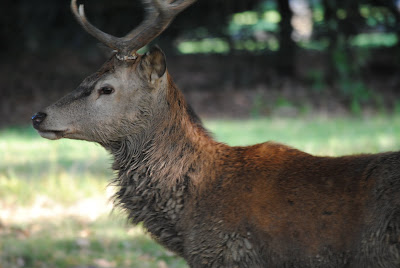The first use of the lens in daylight was a much more enjoyable experience; I used continuous autofocus all day and, on the whole, got sharp results of moving subjects. The initial autofocus issues were due to “low” light conditions in my bedroom, so if you were planning on buying this lens for use in low light I would definitely NOT recommend it. A comparison between the 55-300mm and my kit 18-55mm lens (rrp £195) saw the 18-55mm come up trumps every time with autofocus consistently locking on in under a second, a very poor show for the 55-300mm.
Although my trip to Barnes was enjoyable I only took three pictures that I actually liked out of about two hundred: very poor success to failure ratio. On top of that, those three required post production and lots of pixel wasting cropping! My trip also nearly hospitalised me with a serious bout of lens envy, this reached its pinnacle when I saw a man, sitting on a chair in the café, viewing his camera’s display by resting the camera on the lens on the floor. See the picture below for pretty much the exact set up he had:

Back to the modest 55-300mm AF-S: if you only occasionally require focal length in the 200-300mm range and aren’t super fussy about quality then the 55-300mm AF-S will serve you just fine. The second generation vibration reduction (VRII) works very well and you can use the lens handheld, in good light, at 300mm with no problems. However, if you intend to use this focal range a lot, as I do, then I would recommend that you save up for longer and opt for a more expensive option, as I will. Having done more research into lenses I would also consider buying lenses compatible with Nikon’s full frame cameras (FX Format not DX Format), especially if you are looking to upgrade to full frame in the future.
Below is an image taken with the Nikon AF-S DX NIKKOR 55-300mm f/4.5-5.6G VR lens:

Nikon D3000; 260mm; f/5.6; 1/25 sec; ISO 200; Handheld; VR ON; AF-C.
And here is an image with the lens at 300mm to give you an idea of the quality:

Nikon D3000; 300mm; f/5.6; 1/320 sec; ISO 400; Handheld; VR ON; AF-C.
Please feel free to differ in opinion in the comments section below. I will try to reply to any technical questions you may have or, if they are too difficult, point you towards a good source of information on the subject. /JH












